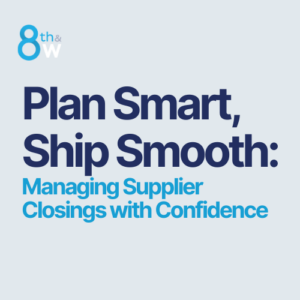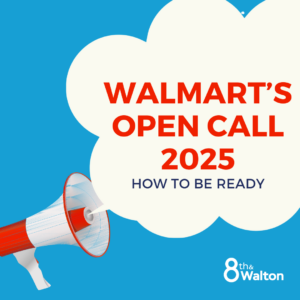Podcast: Play in new window | Download
Subscribe: RSS
The retail landscape has changed drastically over the last year. The pandemic, new requirements from retailers, changes in shopper demands, and accelerated online purchases are just a few challenges that hit the industry in a short amount of time. Retailers and suppliers are not only innovating to meet the challenges, but preparing for those that will remain post-pandemic.
On this episode of the Retail Supplier Podcast (click the play button above to listen), we visited with Spencer Smith, Vice President of Client Development for Hub Group. In our conversation, we discussed the current climate of retail operations and how Hub Group supports suppliers under Walmart’s new initiatives.
Biggest Changes over the Last Year
Hub Group has a dedicated team to monitoring changes at Walmart and across the retail industry. We started our conversation with Spencer getting his insight on the biggest changes over the last year.
“One of the biggest changes from a retailer perspective is the focus on fill rate,” he began. “Making sure items make it to the shelf has always been important. However, during this time when we saw a mass rush to buy products (especially grocery), that led to retailers putting a focus on fill rate again. Before COVID-19, it was really about the assortment of items on the shelf. Just making sure when a shopper came in, they had a wide variety. What really changed from the buying perspective at retail was putting a focus on who can fill. By that I mean who’s controlling the manufacturing upstream or who can demand the co-packing needed for the changes in volume.
“The other big changes were in compliance. More visibility is put on things like Advance Ship Notices (ASNs). Also ensuring product comes labeled the appropriate way, not only from a shipping standpoint, but from a barcoding standpoint. The biggest part of this was Walmart coming out with the 98% On Time In Full (OTIF) requirement. It’s far more focused on performance than we’ve seen in the past. While it’s been a continuing trend, it was definitely exacerbated by COVID-19.”
What is the Local-Fulfillment Model?
Walmart has been using the local-fulfillment model for online grocery orders. We asked Spencer to describe how it works, how it can be applied effectively, and the benefits for retailers.
“Local-fulfillment models can be a couple of different things,” he illustrates. “Think of Amazon and Walmart. Amazon has built up fulfillment centers across the nation, whereas Walmart has about 42 regional distribution centers. Amazon may have hundreds of fulfillment centers they are asking you to deliver into. Amazon just doesn’t have that brick-and-mortar presence.
“What we’re seeing is retailers like Walmart have taken their brick-and-mortar and made it into local-fulfillment centers. Sometimes it will be a secondary facility, but often retailers use the brick-and-mortar space almost as a small warehouse. It allows the retailer the efficiency of seeing the online order being placed and being able to pick it, pack it, and have it ready to ship or pick up same day. This will also drive down cost since you’re not shipping from a distribution center (DC).”
Local-Fulfillment Models vs. Larger DCs
As we wrapped up our conversation, we asked Spencer about the future of fulfillment. Will more retailers embrace a local-fulfillment model, and if so, what impact does it have on the larger DCs?
“Probably so, but I don’t think you’re ever going to get away from the big DCs,” Spencer explained. “Even if you move to a local-fulfillment or just using your stores, you still have to store your inventory or safety-stock a little upstream. You still need to pull from that inventory as needed. However, if you’re always waiting on a traditional DC that’s farther away, it really impacts the speed of service.
“That’s what the local-fulfillment is for: speed of service, so you can have that product the same day,” he concluded. “I don’t see the big DCs going away, because you need them to fulfill stores quickly. I think it’s going to be a blend moving forward, especially for brick-and-mortar retailers that have the ability to leverage a local-fulfillment center and just pull in as needed.”
To learn more about Hub Group and their logistics solutions for suppliers, visit their website.



